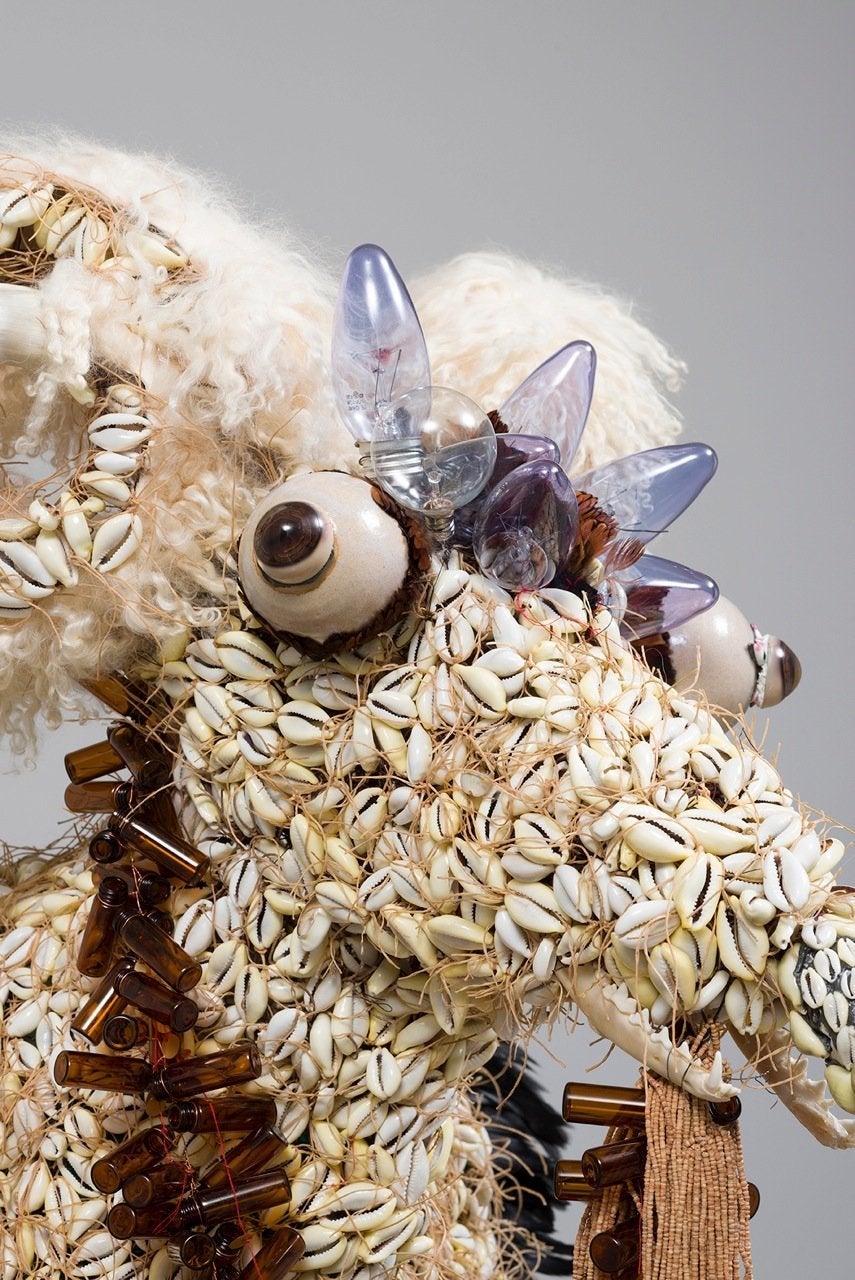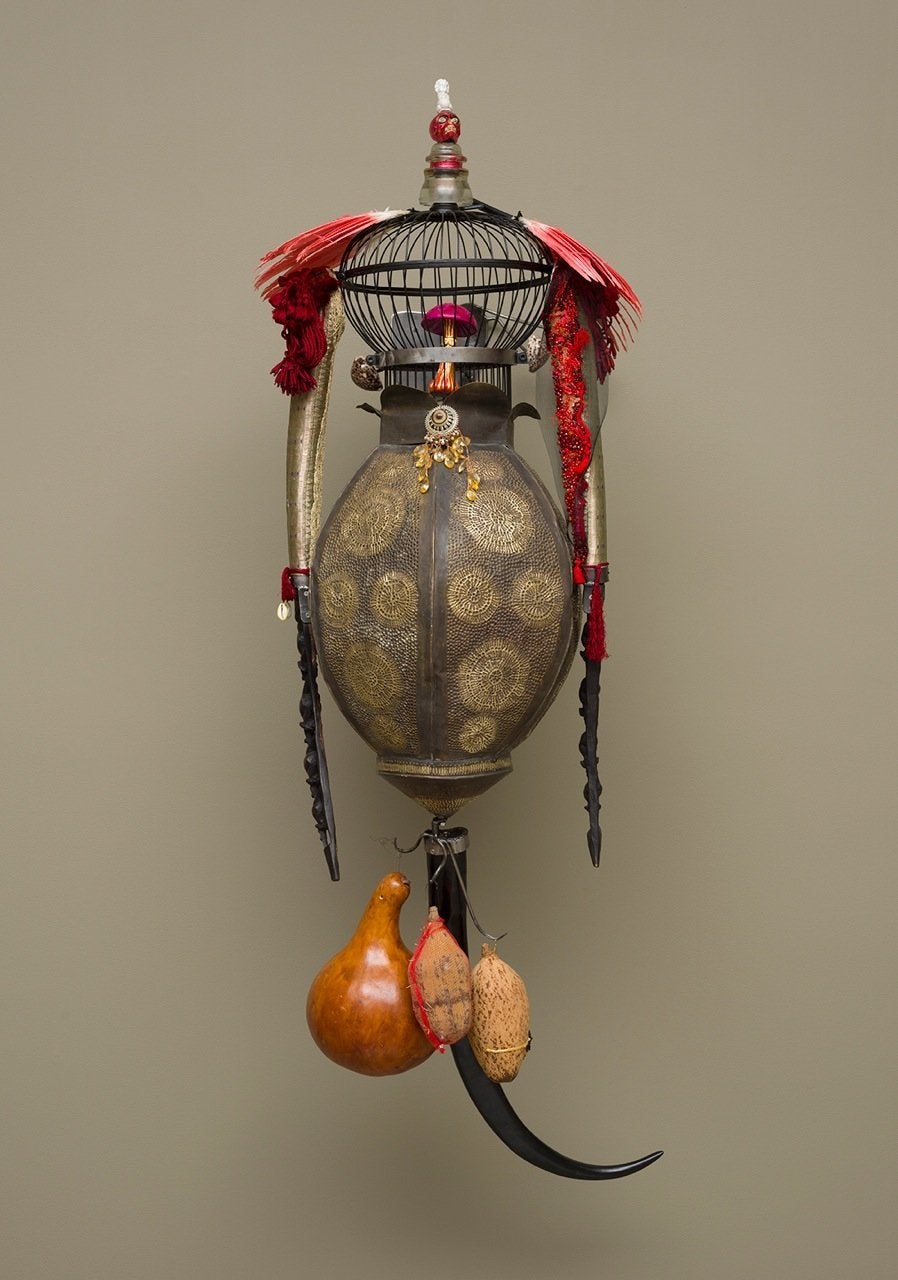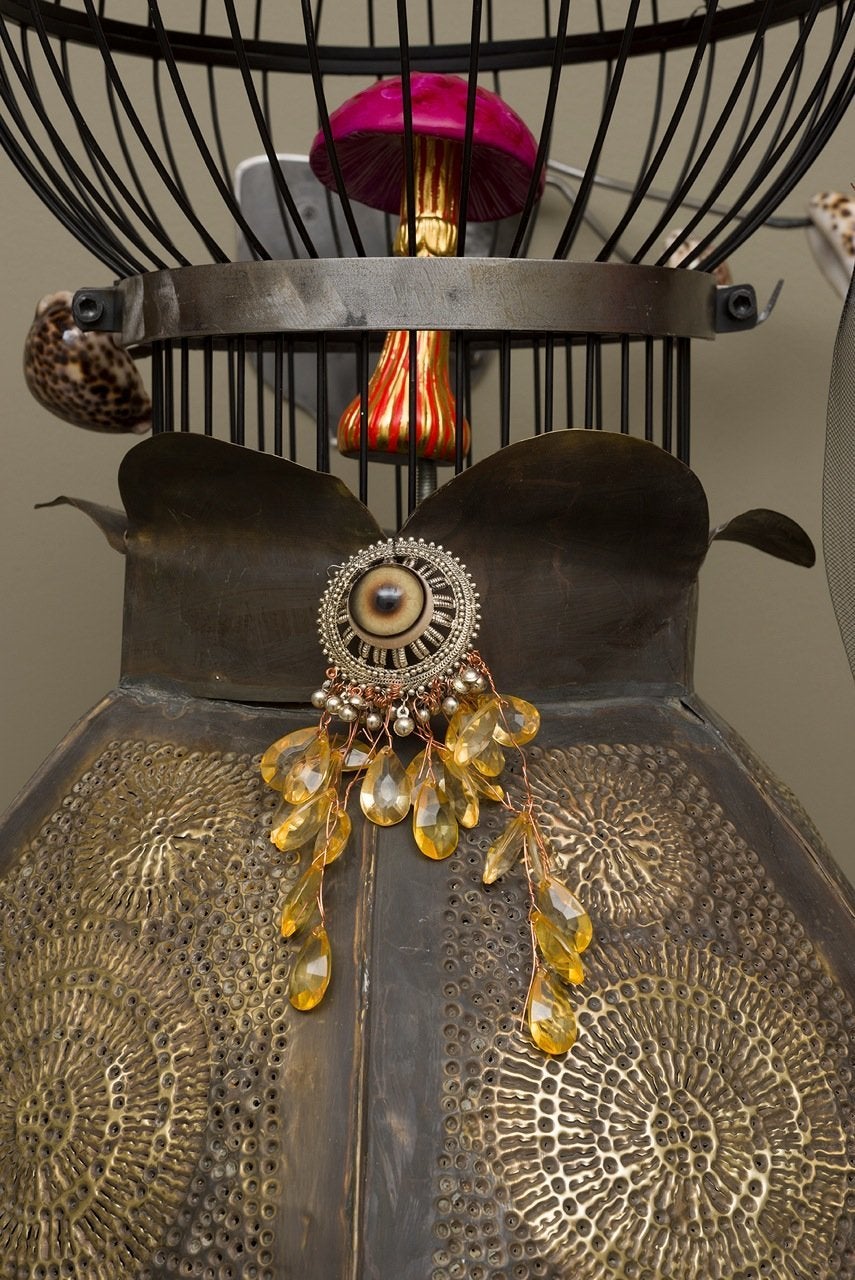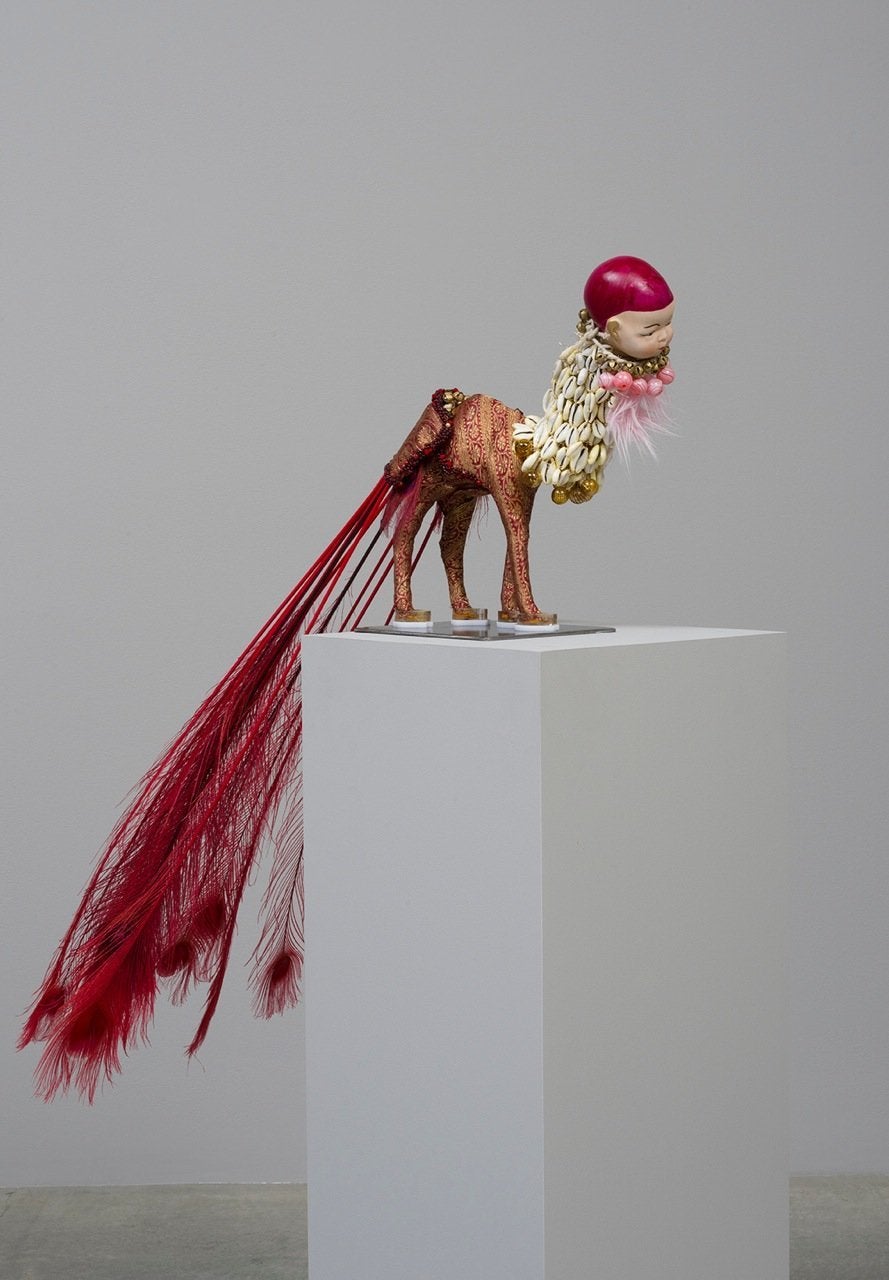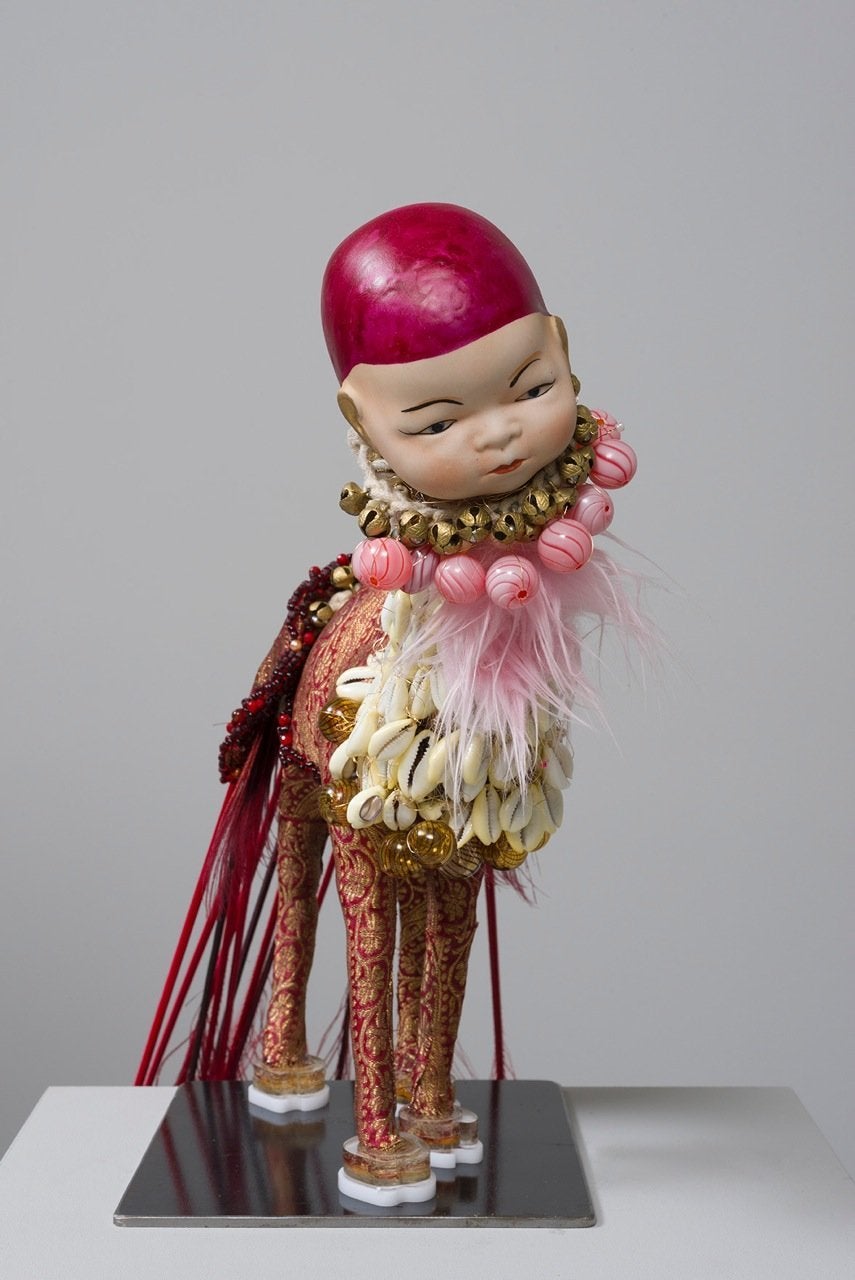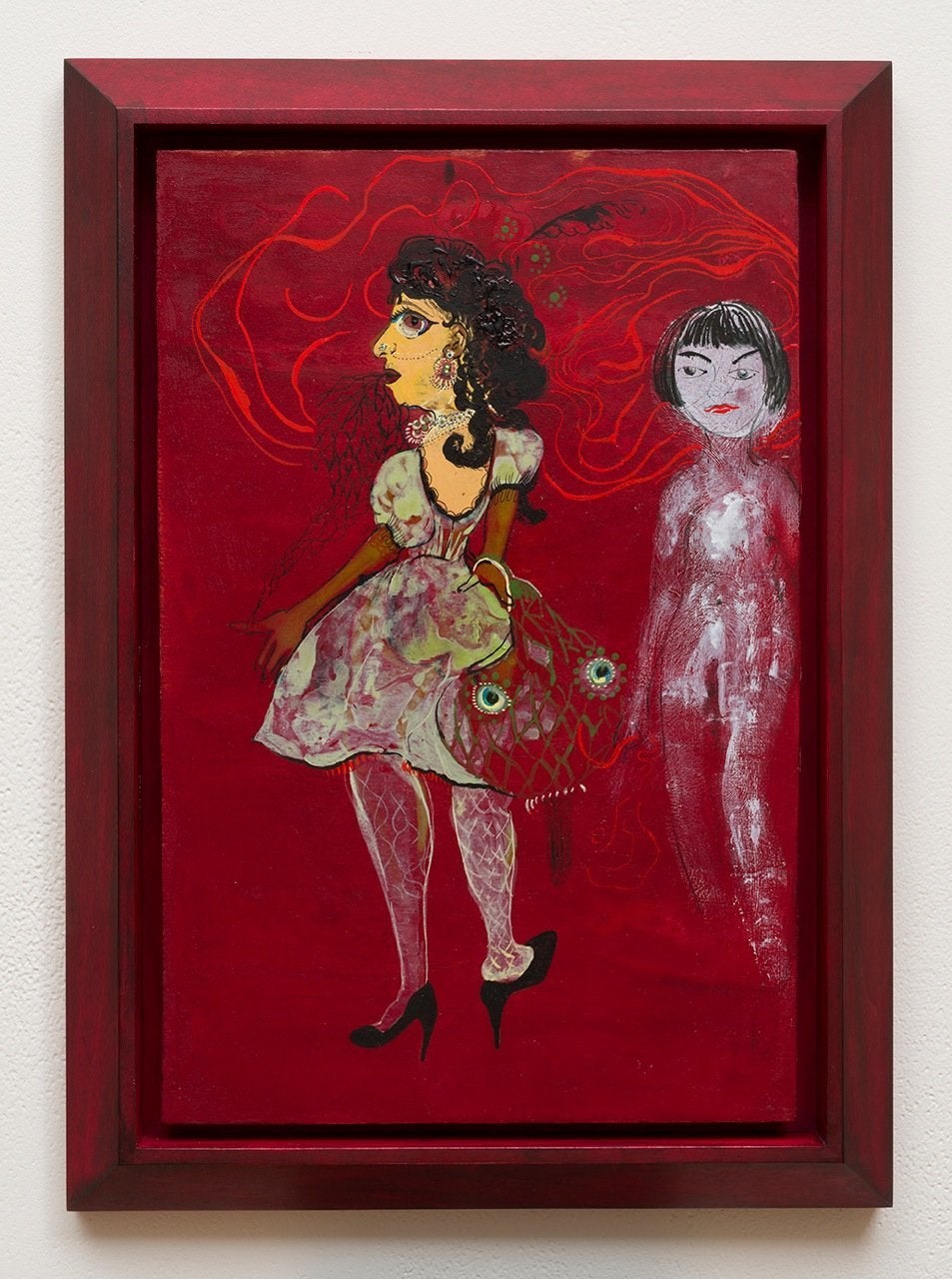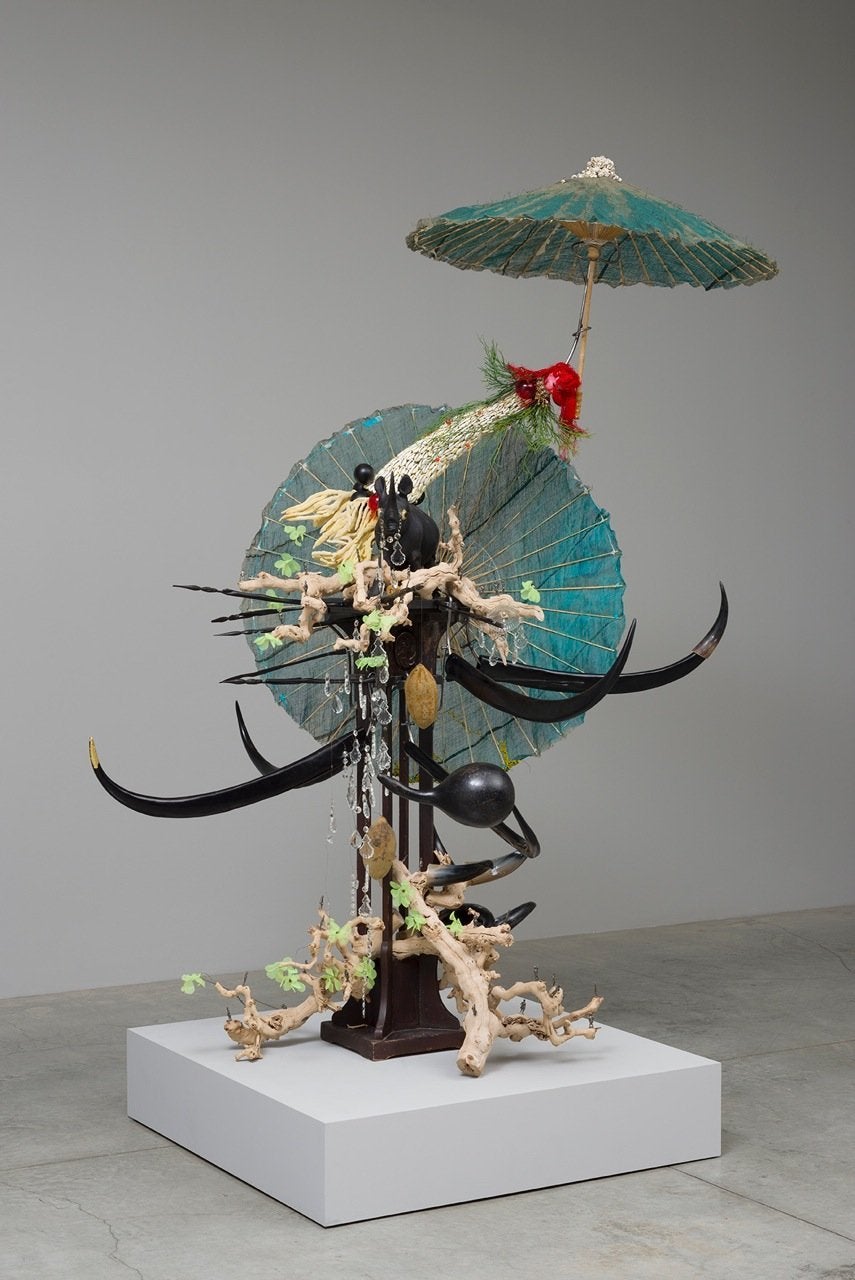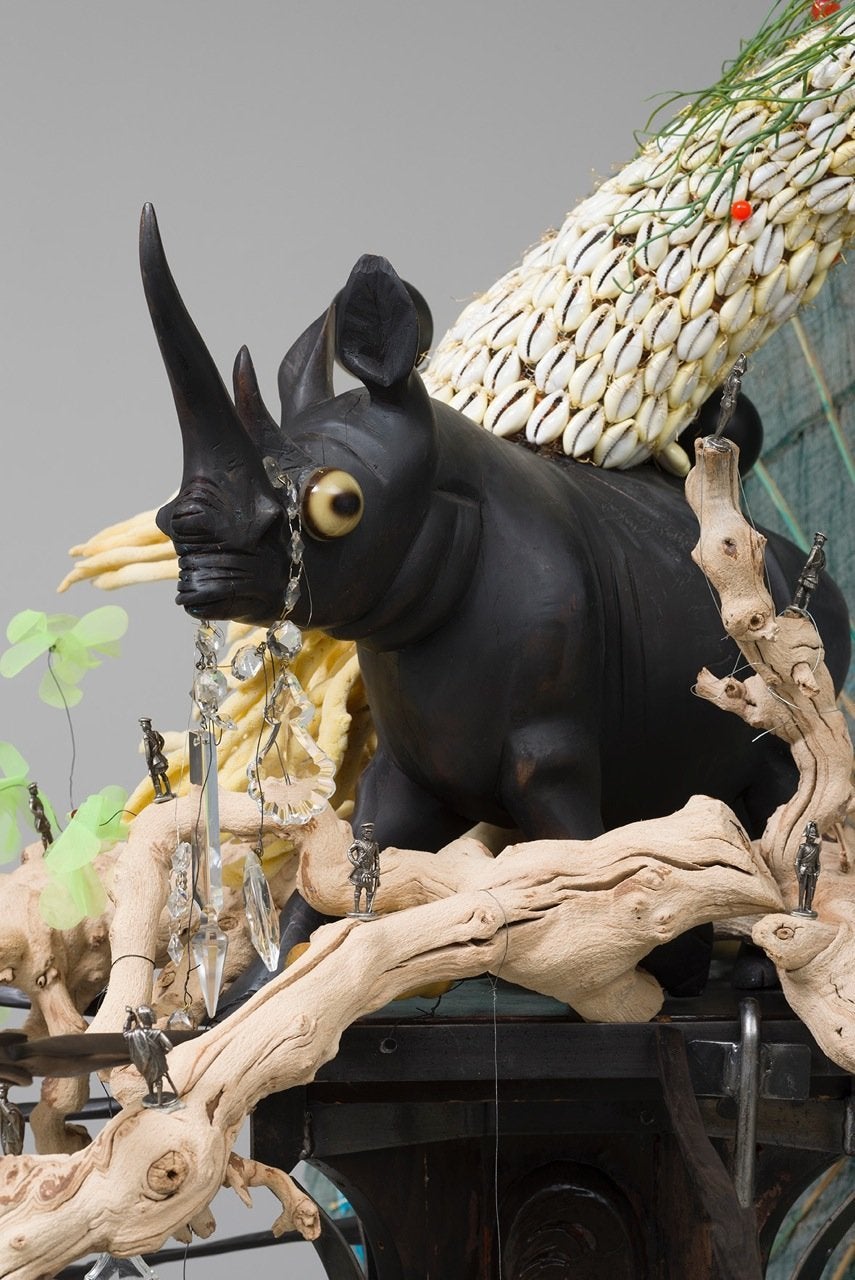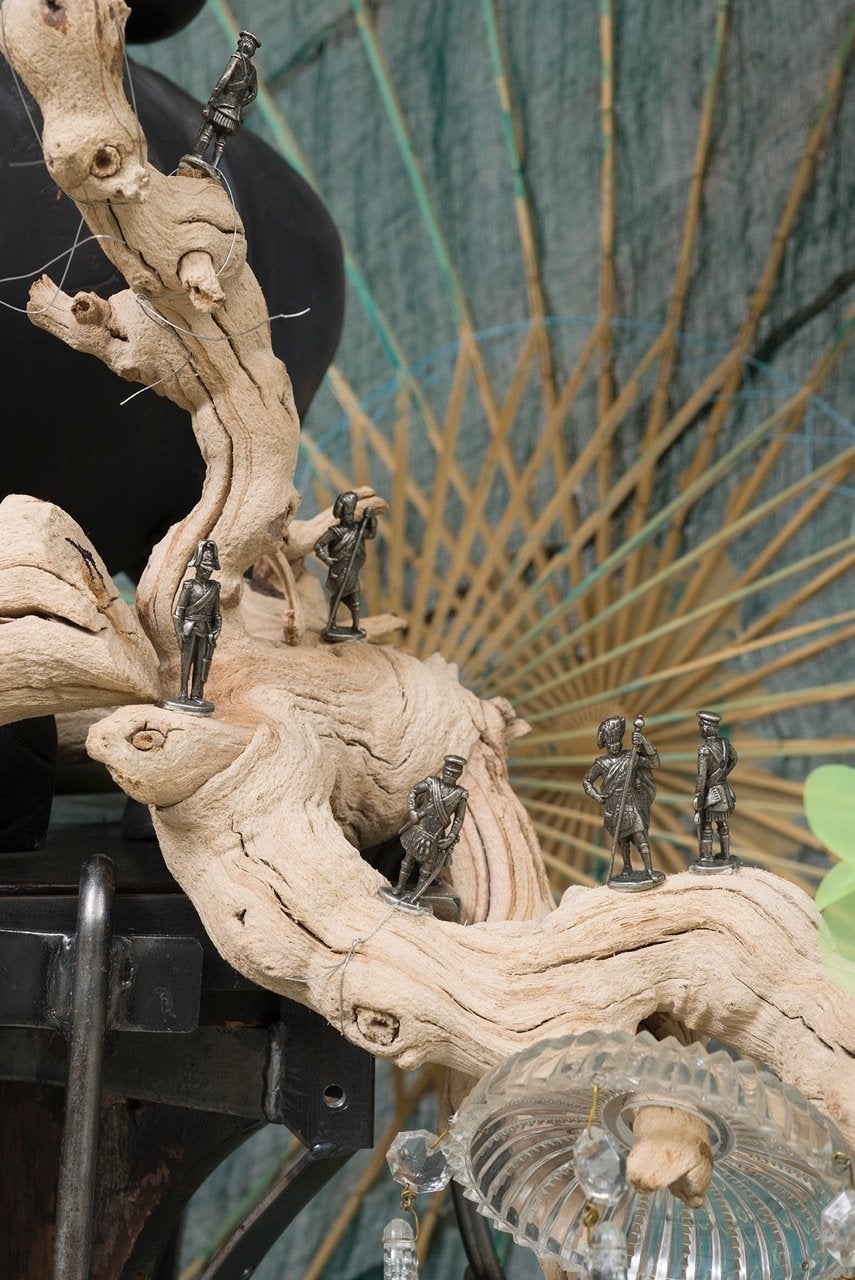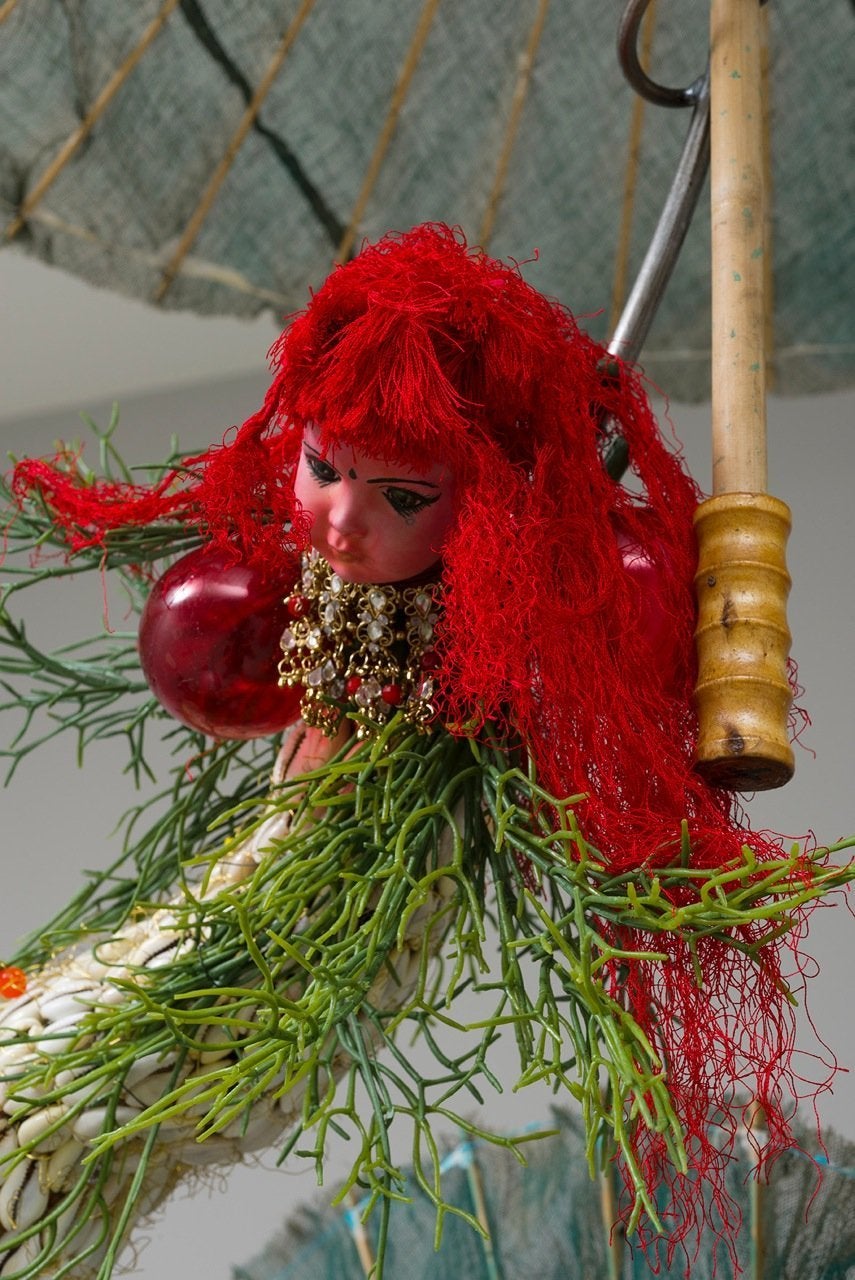There are realities that are a bit unsavory, rules we know are wrong. There are things we'd rather not see, smells we try our best to avoid. There are decisions we find unjust, traditions that make us a bit squeamish. But all these states of in-between stand in stark contrast to the state of disgust, a physical reaction at which point there is no turning back.
Artist Rina Banerjee tackles the complex components that make up this thing called disgust, whether in reaction to animal cruelty, a political dictator or menstrual blood. The New York-based artist's multimedia exhibition, titled "Disgust," explores the fantastical badlands of the disgusting. The works depict actions, attributes, materials, sensations and memories that for whatever reason cross a certain boundary -- the boundary of the grotesque.
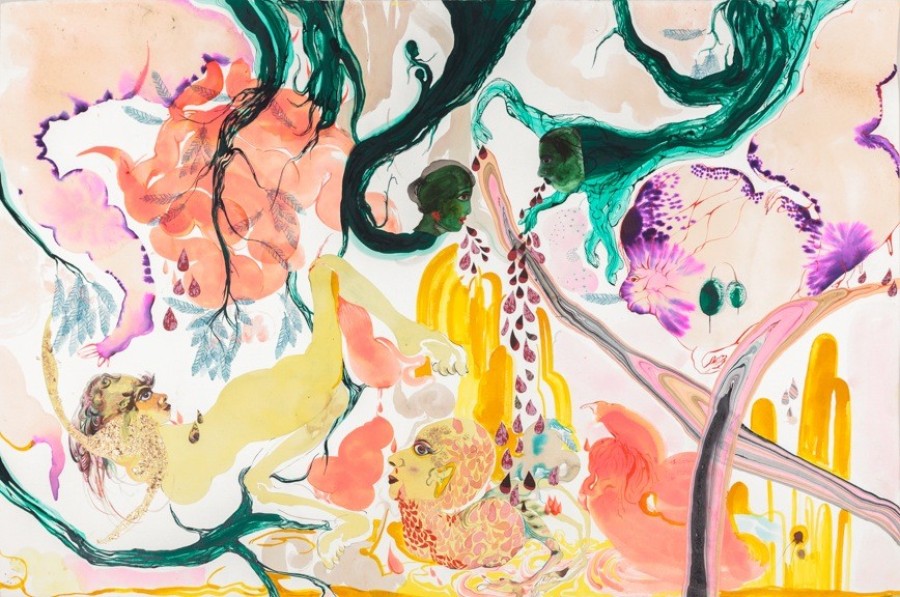
All these organs so too the oral and anal, and nasal, drops and globs like snail, slug, slip and slide, dissolve all our strength, 2014. Acrylic, ink on paper
Banerjee was born in Calcutta, India, moving to the U.K. and subsequently the U.S. as a child. After studying Polymer Engineering as an undergraduate, Banerjee worked as a research chemist before pursuing painting. Banerjee's history, from her South Asian heritage to her scientific background, drips and dribbles throughout her work, never quite defining it. Instead her experiences add to the bubbling brew of media, languages and meanings on the canvas, all eager for an eye to explore them and conjure whatever meanings appear.
Banerjee's drawings, as dainty as they are messy, resemble misremembered fairy tales and melting scientific diagrams, obscuring any possible moral of the story or rational solution beyond recognition. Banerjee's work leads viewers farther and farther into delicate, tangled webs of disgust from which there's no escape. Much of the show is comprised of sculptures, incorporating doll parts, hair, skin and Silly Putty, all reborn as body parts of hybrid creatures, at once gorgeous and unsettling. Somewhere between an abstracted exoticism and a realm of pure fantasy, Banerjee's figures illustrate the point at which specific cultural experiences morph into something surreal.
We reached out to the artist to learn more about her obsession with disgust, its many forms, and how she can possibly make it look so strangely beautiful.

She was now in western style dress covered in part of Empires' ruffle and red dress, had a foreign and peculiar race, a Ganesha who had lost her head, was thrown across sea until herself shipwrecked. A native of Bangladesh lost foot to root in videsh, followed her mother full stop on forehead, trapped tongue of horn and grew ram-like under stress, 2011
This exhibition revolves around the idea of disgust. Can you talk a little about how and why the notion of disgust intrigued you?
I think it's one of those words that most people can understand through their own experience, or at least feel they understand. One of the things I like about the word disgust is that it creates a sense of self-control, but also a lack of self-control. It forces us to think critically in ways that have a bodily response to certain things that are disgusting and seem to mark the boundary of our tolerance.
Tolerance inspires us to consider what we are willing to allow and that's always been a very difficult subject that underlines racism, prejudice and our ability to respond in ways that are intellectually and rationally acceptable. I think it's also an important way we redirect our society and culture. For example, when we have a very corrupt government or an injustice occurs, I think the people in cooperation will stand up against something when it is at just the limit of what they can tolerate. They are totally disgusted by the injustice. Sometimes disgust is a very important moment of transformation for people, when they take a stand or stand up for what they believe in. It's completely solid in its formation, there is nothing to be conflicted about that would prevent you from acting on it. So that whole acting on it, the physical reaction we have, has felt positive in terms of how we've evolved as a culture or society. That's really how I understood it.
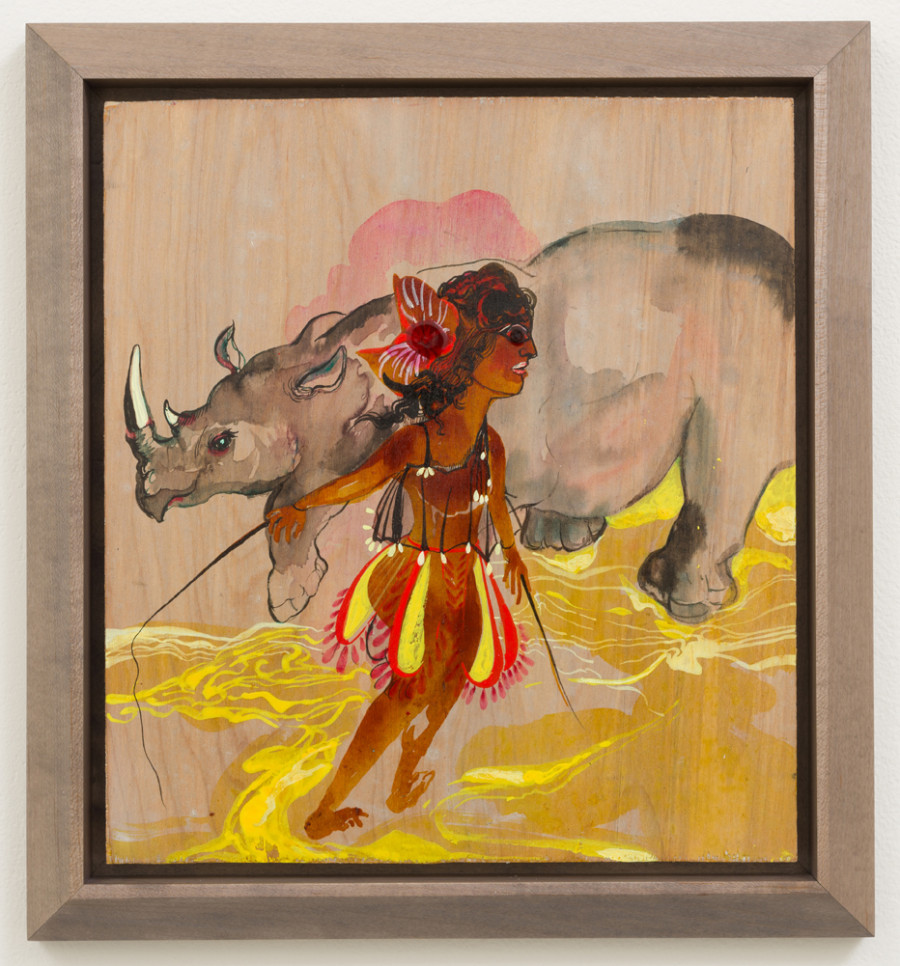
Lost and Found, 2014, acrylic, ink on wood panel
Do you think what's designated as "disgusting" remains semi-consistent between times and cultures?
In this show, I wanted to reflect upon the circumstances that have changed over my lifetime that have shown how, as a culture, we've changed. One, for example, is a circus performer or zoo trainer who is dressed very scantily and beautifully, standing in front of a rhino. She has whips in both hands and both her and the rhino are performing for an audience. We're from a time when there are zoos and there are circuses but also, we've grown to have standards for what is acceptable and what's not. What qualifies as cruelty towards animals, what is disgraceful or shameful, all those things are always growing in our minds and shifting toward our new standards.
This image marks what used to be a favorite thing for me. Now I always worry about going to the zoo, whether it's in India or Amsterdam or San Diego. These spaces are tropes of our past, where we experienced the world. Whether it be the world of exotic animals or animals that are extinct or animals that live in the desert or the forest. We experienced them through these kinds of media, in public. We've grown to learn from our mistakes, to become more sensitive, and now we're, in a sense, gardeners of this world. Other works have to do with women and culture and how they've learned to understand who they are and what they want to be, and shaping that.
Many of the works toy with feminine stereotypes that are deemed disgusting, from vanity to old age. Do you think women are particularly vulnerable to outside projections of disgust?
Women have been the subject of disgust in some sense. Yes, women have been policed to become less disgusting. The worry of feminine beauty has to do with things like odor, how we go from bad odor to perfume. Certainly the show features the idea of fluids, which mark the uncontrollable body, the body that emits not only smell but liquid. And women, because of menstruation, hormonal reasons, or because they give birth, are subject to all that scrutiny. A lot of times it's the fluids we fear and try to control. They signal decay.
It's interesting to think of the body's fluids in comparison to how you described the boundary of disgust -- so rigid and unwavering.
We do create boundaries of difference to mark meaning and at the same time there's a contradiction -- the marking of difference also creates a sort of non-meaning. Something can become too clear, too transparent to where it no longer means anything.
There are not only female figures in my drawings but also male figures, and there is an attention to the deformed body and bodies that are altered, because of surgery or injury or illness. There is a dialogue of everyone who is excluded because of our interest in the visibility of beauty. There are things physically removed because of these ideals, and the contradiction is, of course, that those excluded are the most common. When I take the subway from my home to my studio I'm always taking note of the variety of people that exist. Not only gender but the variety within gender -- whether you're more feminine or less feminine -- also racial differences and they way we assign beauty in different communities. In New York there is a variety that we see in our neighborhoods that we don't in the larger media. To include those in ways that appeal to your sense of plenty, which has this positive connotation if you consider to have more is to see more. And at the same time, I'm considering the boundaries that determine what we know is beautiful and what is not beautiful. I'm trying to make that boundary a little more messy so we can really broaden our vision.
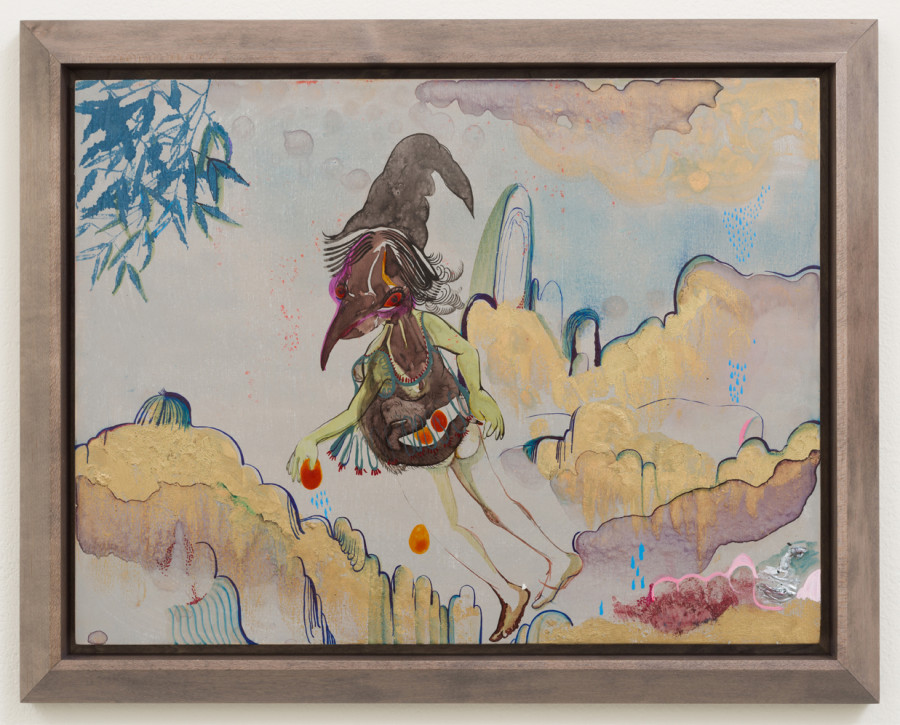
Lovely was this witch who drew her orange eggs, 4 or 6, each a DNA she threw in relieving herself an awkward humanity, 2013 acrylic, ink on Birch panel
Your work titles are incredible, they read like little poems. Can you explain the process of creating a title?
The titles came about with an interest to communicate my work, which doesn't have a very clear message, so to speak. I wanted to create a sense of exploring, to allow people to imagine things that could not possibly have been imagined otherwise, to create a grey area. My work is interested in multiple narratives mashed and tangled together, creating a fantastic experience. Is it about this? Is it about that? I want to invite you into that grey, confusing space of wondering. I want the viewers to come to their own conclusions and I don't want the text to be transparent. You can look at the text and see, well it doesn't make grammatical sense and yet it seems like a language that is a spoken language. You have all these ingredients that come into the text that wouldn't be obvious in the language of the visual.
Your works incorporate materials including silly putty, vaseline and fake fingernails. How do these media, if at all, contribute to the theme of the disgusting?
I think about the meaning of these materials, especially as they are separated from the body. Nails are not really disgusting until you start to isolate them from the body. Vaseline in itself is not disgusting unless you see it in a certain context. Hair and skin, there are all these things which are part of the body and then can be removed from the body. When removed from the body it becomes this other thing which is disgusting. There is this interest in knowing the meaning of a material as it is relocated to a new context. I'm exploring something that is a material, seeing it in a home or location, exploring how it has changed. I'm looking at our own past and future to see that there is a whole language attached to these objects.
"Disgust" will show from May 8 until June 28, 2014 at L.A. Louver in Los Angeles. See a preview of the work below.
